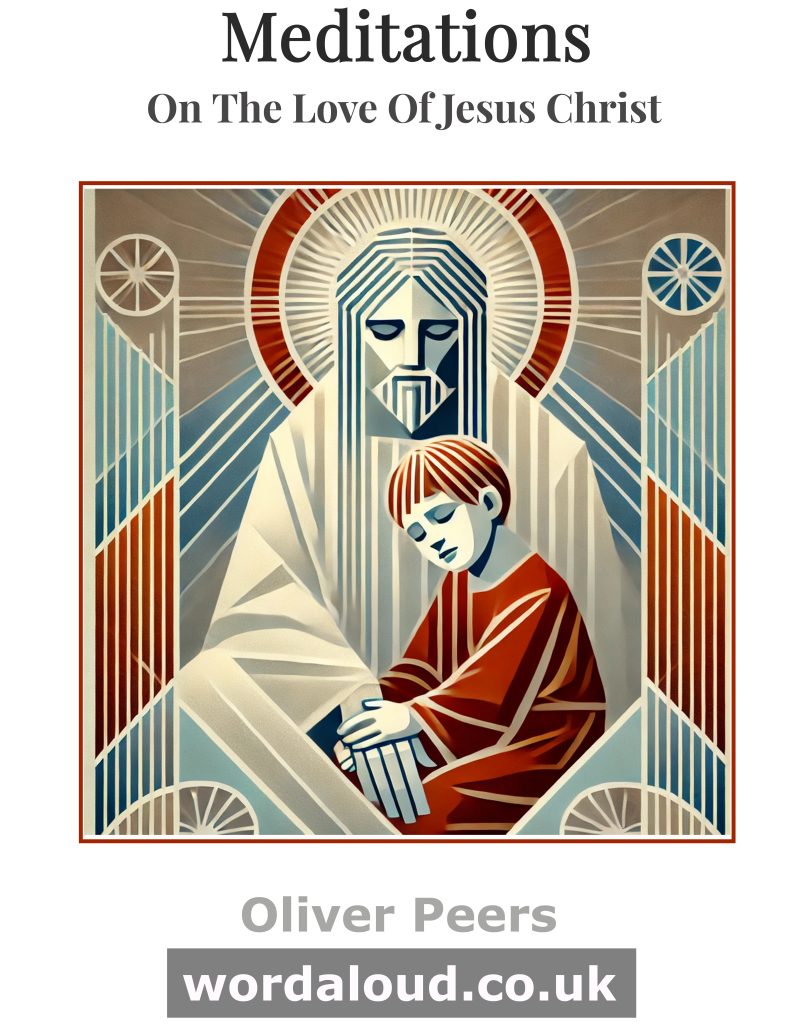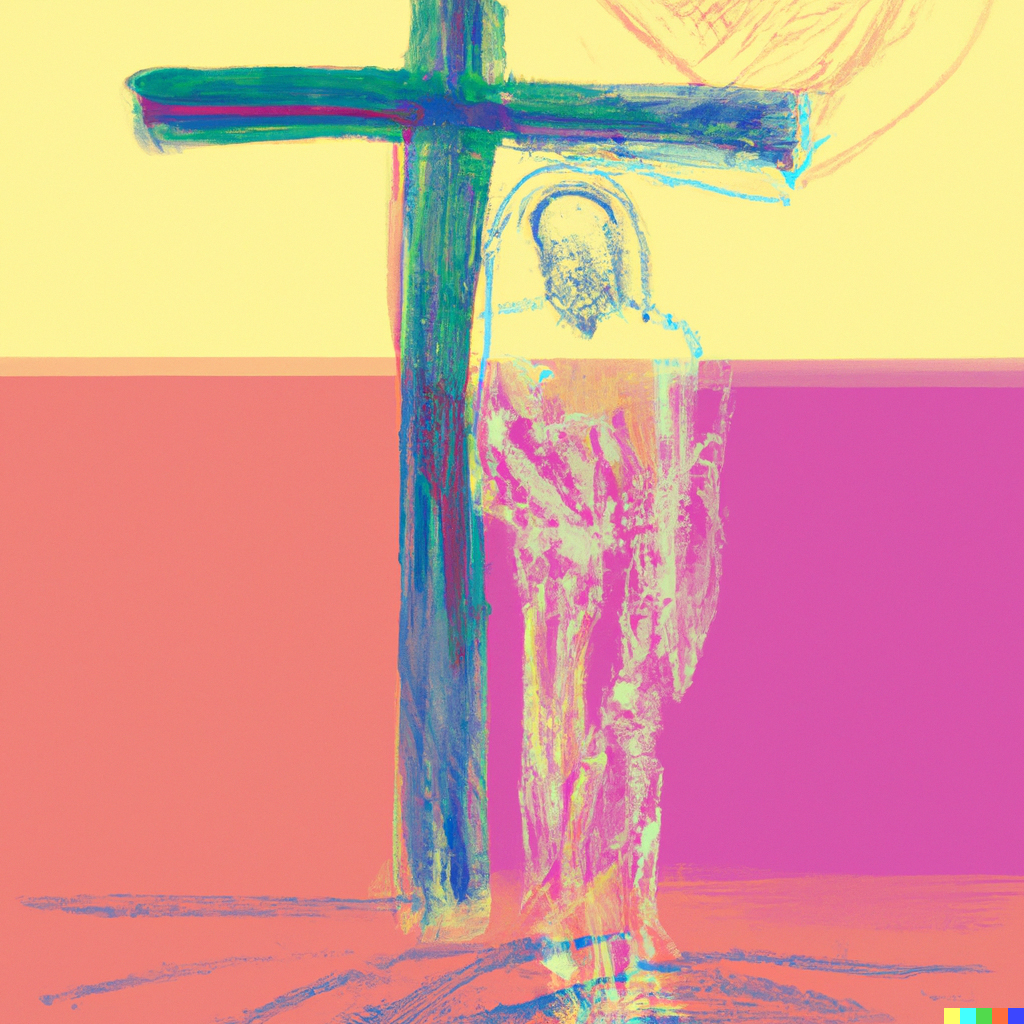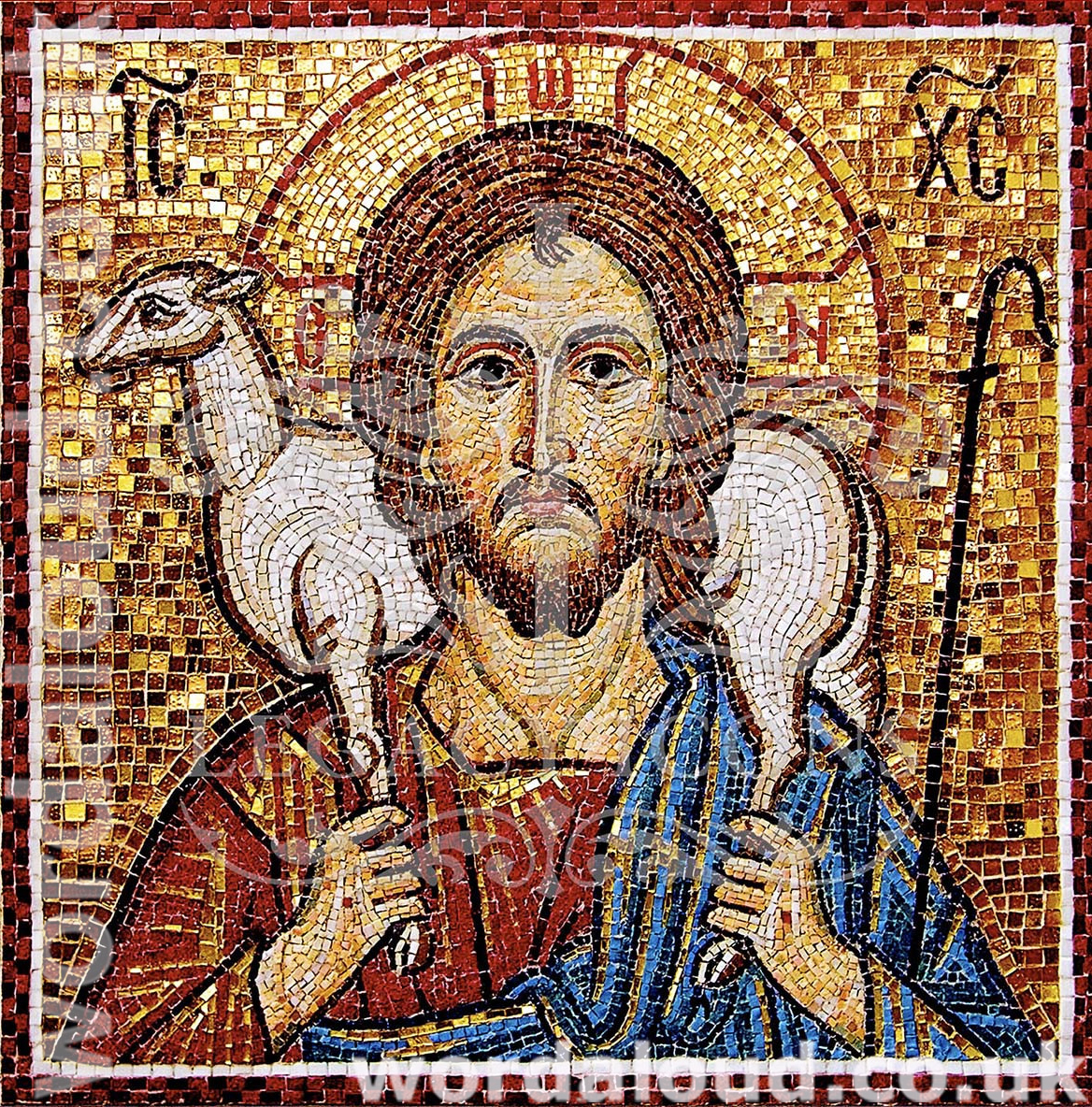Christian Art | Lent
King James Audio Bible | Lent | Daily Bible
YouTube: King James Audio Bible | Lent | KJV | Word Aloud
Do Not Reinvent God In The Image Of Man
What Is Lent?
Lent is a period of fasting, repentance, and spiritual discipline in the Christian faith, occurring during the 40 days leading up to Easter Sunday. It is observed by many Christian denominations, including Roman Catholicism, Eastern Orthodoxy, Anglicanism, and some Protestant traditions.
The exact origins of Lent are somewhat unclear, but it is believed to have originated in the early Christian church as a time of preparation for baptism. It was also a time for converts to the faith to prepare for their initiation into the church at Easter. Over time, the observance of Lent became more widespread and began to include fasting, almsgiving, and prayer as means of repentance and spiritual renewal.
In the Roman Catholic Church, Ash Wednesday marks the beginning of Lent. On this day, believers attend church and have ashes placed on their foreheads as a sign of repentance and mortality. Many people also choose to give up something for the duration of Lent as a form of sacrifice and self-denial. This can be something like a favorite food or activity.
Lent is a time of reflection and preparation for Easter, when Christians celebrate the resurrection of Jesus Christ. It is a time to focus on one’s faith and to draw closer to God. Many people find that the discipline and sacrifice of Lent helps them to grow spiritually and to develop a deeper relationship with God.
What Is The Evidence For Lenten Practice In The Early Christian Church?
One of the earliest references to Lent is found in the writings of St. Irenaeus, a bishop in the second century. He wrote about the 40-day period of preparation for Easter, during which believers fasted and engaged in spiritual practices such as prayer and almsgiving.
Other early Christian writers, such as St. Athanasius and St. Chrysostom, also mention the observance of Lent in their writings. In the fourth century, the Council of Nicaea established the period of Lent as a time of fasting for all believers, and by the sixth century, the observance of Lent had become widespread throughout the Christian Church.

Discuss Further In Relation To The Council Of Nicaea
The Council of Nicaea was a council of Christian bishops that was held in the city of Nicaea in 325 AD. It was called by the Roman Emperor Constantine in order to address several issues facing the Christian Church, including the Arian controversy, which centered on the nature of Jesus Christ and his relationship to God the Father.
One of the decisions made at the Council of Nicaea was to establish the date of Easter as the first Sunday after the full moon following the vernal equinox. This decision helped to standardize the celebration of Easter and to ensure that it was observed on the same date by all believers.
The Council of Nicaea also established the period of Lent as a time of fasting for all believers. This period of fasting was to last for 40 days, in imitation of the 40 days that Jesus spent fasting in the wilderness before beginning his ministry. The Council of Nicaea specified that believers were to abstain from certain foods and engage in spiritual practices such as prayer and almsgiving during this time.
What Did The Council Of Nicaea Say About Lent?
Here is the relevant excerpt from the canons of the Council of Nicaea:
“CANON XLIX.–Let the bishops provide that the people fast often, especially on Wednesdays and Fridays.
CANON L.–It is by all means proper that the Feast of Easter should be kept on one and the same day; but it is not desirable that in the future the feast of Easter should be celebrated on the day of the Jewish Passover.
CANON LI.–It is not proper to fast on the Sabbath-day, but it is proper to fast on the Lord’s day.
CANON LII.–It is not proper to fast on the Sabbath-day, but it is proper to fast on the Lord’s day.
CANON LIII.–It is not proper to fast on the Sabbath-day, but it is proper to fast on the Lord’s day.”
According to these canons, the Council of Nicaea established that believers should fast often, especially on Wednesdays and Fridays, and that the Feast of Easter should be celebrated on a Sunday. It also stated that it was not proper to fast on the Sabbath (Saturday), but that it was proper to fast on the Lord’s Day (Sunday).
Reference: Nicene and Post-Nicene Fathers. Series 2, Vol. 14. Edited by Philip Schaff and Henry Wace. Buffalo, NY: Christian Literature Company, 1890.

![]()
What Was The Baptism And The Preparation For Baptism In The Early Church?
In the early Christian Church, baptism was seen as an important rite of initiation into the faith. It was a way for believers to publicly proclaim their commitment to Jesus Christ and to become part of the Christian community.
The preparation for baptism varied somewhat depending on the time period and the specific Christian community in question, but it generally involved some combination of instruction in the beliefs and practices of the faith, spiritual disciplines such as fasting and prayer, and often a period of probation or testing.
For example, in the early Christian Church, it was common for candidates for baptism to undergo a period of catechesis, or instruction in the basics of the faith, before being baptized. This might include learning about the teachings of Jesus, the history of the church, and the principles of Christian living.
In some cases, candidates for baptism might also be expected to demonstrate their faith and commitment through acts of charity and service to others. They might also be required to fast and pray as a way of preparing themselves spiritually for the rite of baptism.
What Happens On Ash Wednesday?
Ash Wednesday is the first day of Lent in the Western Christian tradition. It is a day of fasting and repentance, and it marks the beginning of the 40-day period of Lent, which leads up to Easter Sunday.
On Ash Wednesday, believers attend church services, where they may receive the imposition of ashes. This is a ritual in which the minister smears ashes on the forehead of the believer in the shape of a cross. The ashes are made from the burned palm branches that were used in the previous year’s Palm Sunday celebrations, and they symbolize both death and repentance. The minister may say a phrase such as “Remember that you are dust, and to dust you shall return” as the ashes are imposed.
In addition to the imposition of ashes, Ash Wednesday services may also include prayers of repentance, confessing of sins, and other acts of spiritual discipline. Many believers also choose to give up something for the duration of Lent as a form of sacrifice and self-denial, and they may make this commitment on Ash Wednesday.
Are There Other Significant Days During Lent?
Yes, there are several other significant days during the season of Lent:
- Mardi Gras: This holiday, also known as Fat Tuesday, is the last day before the start of Lent and is typically marked by celebrations and feasts. It is observed on the Tuesday before Ash Wednesday.
- Palm Sunday: This is the Sunday before Easter and commemorates Jesus’ triumphal entry into Jerusalem, where he was greeted with palm branches.
- Holy Week: This is the week leading up to Easter and includes several important days in the Christian calendar, including Maundy Thursday, Good Friday, and Holy Saturday.
- Maundy Thursday: This is the Thursday before Easter and commemorates the Last Supper, which Jesus shared with his disciples on the night before his Crucifixion.
- Good Friday: This is the Friday before Easter and commemorates the Crucifixion of Jesus Christ.
- Holy Saturday: This is the day before Easter and is a time of reflection and anticipation as believers prepare for the celebration of Jesus’ resurrection on Easter Sunday.
Mother’s Day Is In Lent?
Mother’s Day is not traditionally associated with the season of Lent in the Christian calendar. Mother’s Day is a modern holiday that is celebrated on different days in different parts of the world. In the United States, Mother’s Day is celebrated on the second Sunday in May. In other countries, such as the United Kingdom and Australia, Mother’s Day is celebrated on the fourth Sunday in Lent.
I Understand That Sundays During The Period Of Lent Are Not Lenten
You are correct that Sundays during the season of Lent are not considered to be part of the actual period of Lent. This is because Sunday is considered to be a “mini-Easter,” a day of celebration and rejoicing in the resurrection of Jesus Christ. As such, the traditional rules of Lenten observance, such as fasting and abstaining from certain foods, are not observed on Sundays.
However, it is still common for believers to engage in spiritual disciplines and acts of devotion on Sundays during Lent, as a way of preparing for Easter and deepening their faith. Many churches also offer special services or events on Sundays during Lent as a way of helping believers to focus on their spiritual journey.
So, while Sundays are not technically part of the period of Lent, they are still an important part of the journey towards Easter and are often observed as a time of spiritual renewal and growth.
What Might I Hope To Gain Through Spiritual Observance During Lent?
Lent is a season of spiritual observance in the Christian tradition, typically lasting for the 40 days leading up to Easter. It is a time for reflection, repentance, and renewal, as Christians prepare to celebrate the resurrection of Jesus Christ.
During Lent, many people choose to focus on their relationship with God through practices such as prayer, fasting, and reading and reflecting on spiritual texts. Some people also use this time to give up something that they enjoy as a way of sacrificing for the sake of their faith. This might be something small, like a favorite food or activity, or something more significant, like a vice or bad habit. The purpose of this sacrifice is not to suffer, but rather to use the opportunity to turn one’s attention more fully towards God and to grow in one’s spiritual life.
In addition to these individual practices, Lent is also often a time for community involvement and service to others. This might involve volunteering at a local soup kitchen or homeless shelter, donating money to a worthy cause, or reaching out to those in need in other ways. By serving others, we can follow the example of Jesus, who came “not to be served but to serve” (Mark 10:45).
As you observe Lent, you might find it helpful to draw inspiration from the writings of spiritual figures and writers who have gone before you. For example, the Christian mystic Julian of Norwich wrote about the idea of “all shall be well” in her reflections on God’s love and care for all of creation. This phrase, which she received in a series of visions, has become a source of hope and comfort for many Christians over the centuries.
Similarly, the apostle Paul’s letters to the early Christian communities contain many passages that speak to the idea of spiritual transformation through faith in Christ. Reading and reflecting on passages like these can help to deepen your understanding of your faith and to connect more deeply with the spiritual realities that Lent seeks to explore.
As you move through the season of Lent, you may find that your spiritual journey takes you in unexpected directions. This is natural, and it is important to be open to the movements of the Holy Spirit as you seek to grow in your relationship with God. Above all, remember that Lent is a time of grace, a time to draw closer to God and to allow yourself to be transformed by his love. May you find peace, joy, and spiritual growth as you journey through this season of observance.

![]()
Say More Regarding Saints And Spiritual Exemplars
St. Augustine, a bishop in the early Christian church, wrote extensively about the spiritual significance of Lent in his sermons and writings. In one such sermon, he said, “Let us approach the season of Lent with hearts contrite and prepared, that we may receive the abundant grace of God, who, though he desires always to forgive, yet in this season more particularly offers pardon to all who turn to him.”
- St. Augustine: “Faith is to believe what you do not see; the reward of this faith is to see what you believe.” (Sermon on the Mount)
Similarly, St. Thomas Aquinas, a 13th century theologian and priest, wrote about the importance of Lenten practices such as fasting and almsgiving. He said, “Fasting and almsgiving, by removing obstacles, dispose us to receive the grace of God. Almsgiving frees us from the hindrance of avarice, while fasting frees us from the hindrance of sensual pleasures.”
- St. Thomas Aquinas: “To one who has faith, no explanation is necessary. To one without faith, no explanation is possible.” (Summa Theologiae)
In the New Testament, the apostle Paul also speaks to the idea of spiritual transformation through faith in Christ. In his letter to the Galatians, he writes, “I have been crucified with Christ and I no longer live, but Christ lives in me. The life I now live in the body, I live by faith in the Son of God, who loved me and gave himself for me” (Galatians 2:20).
- St. Paul: “Do not be conformed to this world, but be transformed by the renewing of your mind, that you may prove what is that good and acceptable and perfect will of God” (Romans 12:2)
The Desert Fathers were early Christian monks who lived in the desert regions of Egypt and Palestine in the 4th and 5th centuries. They were known for their asceticism and their devotion to God, and their writings and teachings have been a source of inspiration for many spiritual seekers throughout the centuries. One such figure was St. Anthony the Great, who is often considered the father of monasticism. In his writings, he encourages others to seek a deeper relationship with God through practices such as prayer, fasting, and simplicity of life.
- St. Anthony the Great: “If you see your brother or sister sin, do not be eager to tell others about it. Keep it to yourself. If you can, try to help your brother or sister see their mistake and encourage them to confess it and ask for forgiveness. And remember, if you have not forgiven someone from your own heart, you have no right to go to your brother or sister in sin. First be reconciled to that person and then go to your brother or sister.” (Letter to a Monk)
St. Francis of Assisi was an Italian friar and preacher who is known for his love of poverty and his devotion to God’s creation. He is the patron saint of animals and the environment, and his writings and teachings have inspired many to live more humble, simple, and compassionate lives. In his famous prayer, the “Prayer of St. Francis,” he asks God to help him to “seek rather to comfort than to be comforted, to understand than to be understood, to love than to be loved.”
- St. Francis of Assisi: “Preach the Gospel at all times, and if necessary, use words.” (The Rule of St. Francis)
The English mystic Julian of Norwich was a 14th century anchorite (a person who withdraws from the world to live a solitary, contemplative life) whose writings have been widely read and revered for centuries. In her book “Revelations of Divine Love,” she shares the insights and visions that she received from God during a time of illness, including the phrase “all shall be well.” These words have brought hope and comfort to many people throughout the years, and Julian’s writings continue to be a source of inspiration for those seeking a deeper relationship with God.
- Julian of Norwich: “All shall be well, and all shall be well, and all manner of thing shall be well.” (Revelations of Divine Love)
St. Ignatius of Loyola was a 16th century Spanish priest and founder of the Jesuit order. He is known for his spiritual writings, including his book “The Spiritual Exercises,” which is a guide for a month-long retreat focused on deepening one’s relationship with God. In these writings, St. Ignatius encourages readers to reflect on their own lives, to repent of their sins, and to draw closer to God through prayer and meditation.
- St. Ignatius of Loyola: “Love consists in sharing what one has and what one is with those one loves. Love ought to show itself in deeds more than in words.” (The Spiritual Exercises)
St. Teresa of Avila was a 16th century Spanish mystic and writer who is known for her contributions to the Christian tradition of contemplation and prayer. She is the author of several books, including “The Way of Perfection,” which offers guidance for those seeking to grow in their spiritual lives through practices such as prayer and self-examination. St. Teresa’s writings are characterized by a deep sense of humility and a passionate love for God.
- St. Teresa of Avila: “The trouble with most of us is that we would rather be ruined by praise than saved by criticism.” (The Way of Perfection)
St. John of the Cross was a 16th century Spanish mystic and priest who is known for his writings on the nature of spiritual transformation. In his book “The Dark Night of the Soul,” he describes the journey of the soul towards union with God as a process of purification and enlightenment. St. John’s writings are often considered to be some of the most profound and challenging in the Christian tradition, and they offer a wealth of wisdom for those seeking to grow in their faith.
- St. John of the Cross: “Where there is no love, put love, and you will find love.” (The Ascent of Mount Carmel)
St. Basil the Great was a 4th century bishop and theologian who is known for his contributions to the Christian tradition of monasticism and his strong defense of the orthodox faith. He wrote extensively about the importance of living a life of simplicity, devotion, and service to others, and his writings continue to be a source of inspiration for many people today.
- St. Basil the Great: “He who has learned how to pray has learned everything.” (Letter to a Young Monk)
St. Hildegard of Bingen was a 12th century German mystic and writer who is known for her contributions to the fields of theology, music, and natural science. She is the author of several books, including “Scivias,” which is a collection of visions and revelations that she received from God. St. Hildegard’s writings are characterized by a deep sense of awe and wonder at the mysteries of God’s creation, and they offer a unique perspective on the spiritual life.
- St. Hildegard of Bingen: “The human person is a being created in the image of God, having received the breath of life from the same source as the divine nature. The human person is a creature made of body and soul, a creature that is therefore both visible and invisible. And it is a creature that lives in time and in eternity.” (Scivias)
St. Athanasius was a 4th century bishop and theologian who is known for his defense of the doctrine of the divinity of Jesus Christ. He wrote extensively about the nature of God and the importance of living a life of faith, and his writings have been influential in the Christian tradition for centuries. In his book “On the Incarnation,” he writes, “The Word of God… assumed a human nature, that he might make man God.” This idea, that through faith in Jesus Christ we can be reconciled to God and share in his divine nature, is a central theme in St. Athanasius’ writings and is an important aspect of the Christian faith.
- St. Athanasius: “The Word of God became man in order that we might become God.” (On the Incarnation)
What Are The Meaning And Provenance Of The Word Lent?
The word “Lent” is derived from the Old English word “lencten,” which means “spring.” It is related to the Old High German word “lenzin,” and the Old Norse word “lent,” which also have the same meaning. The word “Lent” is thought to have originally referred to the lengthening of the days as spring approached, as the period of Lent coincides with the start of the spring season in the Northern Hemisphere.
In modern English, the word “Lent” is primarily used to refer to the period of fasting and spiritual observance leading up to Easter in the Christian tradition. It is typically used as a noun, as in “Lent begins on Ash Wednesday” or “I am observing Lent by giving up chocolate.” The word is often capitalized when it is used to refer to this specific period of time.
Lent is also sometimes used as an adjective, as in “Lenten observances” or “Lenten devotions.” In this context, it refers to something that is related to or associated with the season of Lent.

![]()
How Do People Of Difference Languages Name Lent?
Lent is known by different names in different languages:
- In Spanish, Lent is known as “Cuaresma,” which comes from the Latin word “quadragesima,” meaning “fortieth.”
- In French, Lent is known as “Carême,” which is derived from the Latin “quadragesima.”
- In German, Lent is known as “Fastenzeit,” which means “time of fasting.”
- In Italian, Lent is known as “Quaresima,” which comes from the Latin “quadragesima.”
- In Dutch, Lent is known as “Vasten,” which means “to fast.”
- In Portuguese, Lent is known as “Quaresma,” which comes from the Latin “quadragesima.”
- In Russian, Lent is known as “Великий пост” (Velikiy post), which means “Great Lent.”








